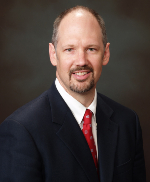Presidential transitions are never easy, neither for the president nor for the institution. No matter how effective the transition plan, there is always disorientation with loss of momentum. Some institutions and individuals weather transitions seemingly without any difficulty; they are usually the ones in very stable condition whose presidents leave for new positions which redound to the glory of the ones they are leaving or who retire upon leaving in a blaze of glory. But for institutions less well off or developed, the challenge of transition can be fraught with risk and pain. There are ways, however, to make it easier for all concerned.
More often than not, president and board have not planned well for transition. They focus on vision, mission and planning, often assuming that the beginning and the end of a presidential term of office will take care of themselves. All too often the departing president has not left in a blaze of glory, with unfinished business in the office and unfulfilled expectations in the community. He or she might not have left willingly and likely had planned to accomplish much more than had been possible at the time of departure. The incoming president, on the other hand, might not have benefitted from the predecessor’s orientation and in some cases might assume that such a conversation might be more harmful than helpful. The board itself was likely divided about the termination of the predecessor, too, leaving the new leader with the challenge of unifying a disgruntled group of overseers lacking the capacity to work effectively together. Trust, in these situations, can hardly be assumed. As a result the incoming president has to navigate an employment contract with a divided board scarred from the exodus of the predecessor. Indeed, when a presidency follows a difficult termination, it is rarely possible to trust the board enough to orchestrate a plan for a wise transition in the future. The temptation is to avoid thinking that far in advance and to assume that the ultimate exodus will take care of itself. Unsurprisingly, “transitionitis” perpetuates itself; the institution suffers and, in many cases, candidates seeking a steady course are even reluctant to put their hats in the ring.
How can we avoid this syndrome? There is no substitute, I would argue, for effective planning, ideally with someone detached from the institution with the experience to help a newly appointed president think through his or her entire term of office and/or with a board before it embarks on a presidential search. Ideally, when an institution is seeking a president it needs a search process that addresses transition issues head on. The selection criteria ought to include the issue of transition. Candidates should be asked about what they would do to minimize the abruptness of transition both at the beginning and the end of a term. They should be open to self-assessment and evaluation by key constituencies as well as to a constructive response to evaluation. They should be open to a healthy relationship with the board, recognizing that the president cannot function well without a well operating board and without mechanisms for other key constituencies to register concerns as necessary and systematically. They should have a leadership style which is relatively selfless and institution centered. They should be willing to discuss at least annually how long they plan to stay and whether their plans and the institutions plans are synchronous. This is no easy task given the fullness of the plate of both president and board. When one is enmeshed in the ongoing challenge of institutional leadership the last thing one wants to do is focus on the end of a term and the beginning of the next. Ideally, however, this ought to be done to avoid the rehash of transitionitis.
Once a president is named the same issues should remain front and center in the annual evaluation process with systematic, transparent reports to the board. He or she should develop strategic plans and visions which are institution centered such that when they do leave the plans are self-sustaining and aligned with the vision. The implementation strategies should not be centered on the president alone but have significant direction from key faculty, staff and trustees. The plan’s successes should be acknowledged in terms of the institution and not just the president.
Given the pace of a presidency, the challenges of effective trusteeship and the inevitable turnover in higher education leadership, it behooves an institution to invest in a leadership coach who centers on the long term viability and success of the institution and advises the leadership accordingly. Sometimes trustees can play that role effectively especially when they have been presidents themselves. Oftentimes, however, well-meaning trustees make matters worse, provoking premature transitions or fostering a lingering and counter-productive presidency.
A five-year term of office is frequently sufficient to articulate the vision, build and implement a plan or at least stages of a plan which can be further developed by a successor. If, based on a healthy and transparent self-assessment and institutional evaluation process, a second three or five year term is deemed satisfactory for the president and the institution, then he or she should be encouraged to continue. If not, not. The point here is that the vision and plan should be owned by the institution such that if for any reason a leadership change becomes necessary the institution will survive the transition and even grow stronger.
The insistence on institution centered transition planning emerges from my experiences as president and trustee. I have had the privilege of presiding at four institutions, three as board appointed president and one as interim. I oversaw three turnarounds and one substantial lift in a university’s development. Each transition required sensitive communication with the board and other constituencies. Putting the institution first was hardly an automatic instinct, requiring the wisdom and humor of someone beyond the fray who could help me appreciate the value of moving on or not moving on from an institutional point of view, which, in the long run, would be better for me as well as for the institution. My leadership coach worked with me during all four presidencies, augmenting my areas of expertise and providing the wisdom and even comic relief essential for coping with situations where one false move along the rapids of a turnaround could cause the institution to topple. Having someone around to reflect on the exigencies of the office was essential to my success.
Since stepping down, I have been coaching presidential colleagues and aspiring presidents about aspects of transition. I tell them that a university is never fully out of transition even when its president has been in office for a long time. The challenge is to manage and leverage it over time as smoothly as possible, so that all key constituencies appreciate the need to work together across the usual lines for the sake of continuity and progress without the unnecessary angst of transitionitis.
Dr. Hurwitz was president of Albright College from 1992-1999, New England College from 1999-2004, and American University of Central Asia from 2005-2011. She was interim president at Pine Manor College in 2013.


 John Stevens, Ed.D.
John Stevens, Ed.D. Brendan Leonard, M.B.A.
Brendan Leonard, M.B.A.